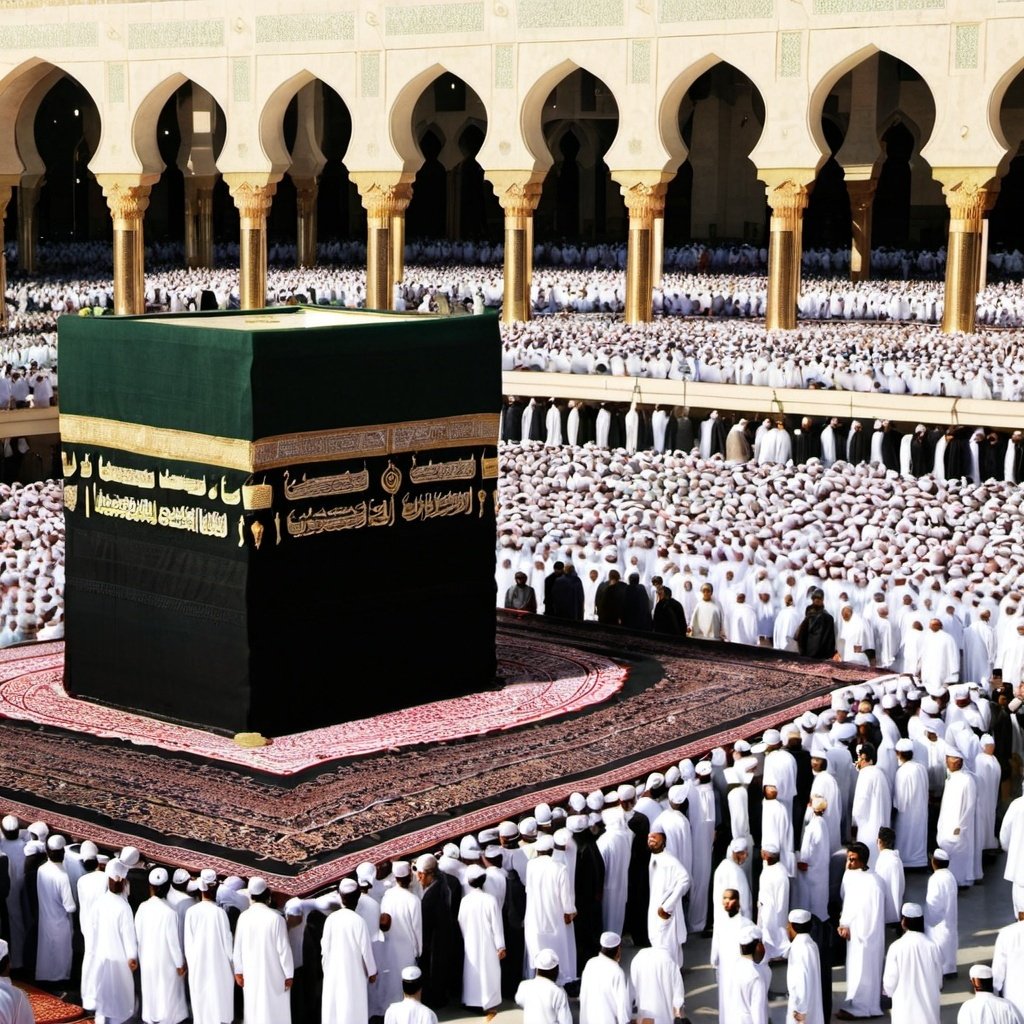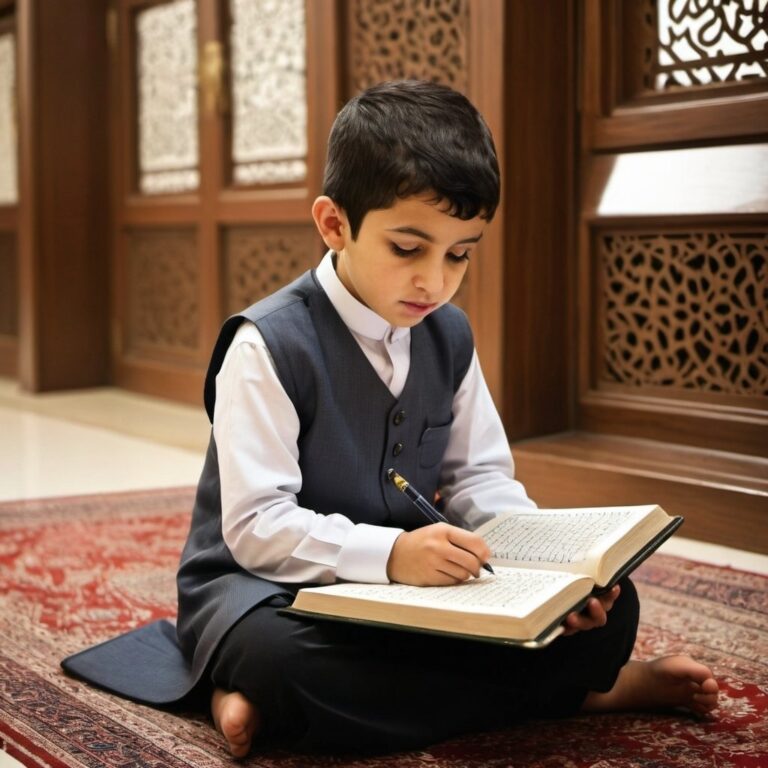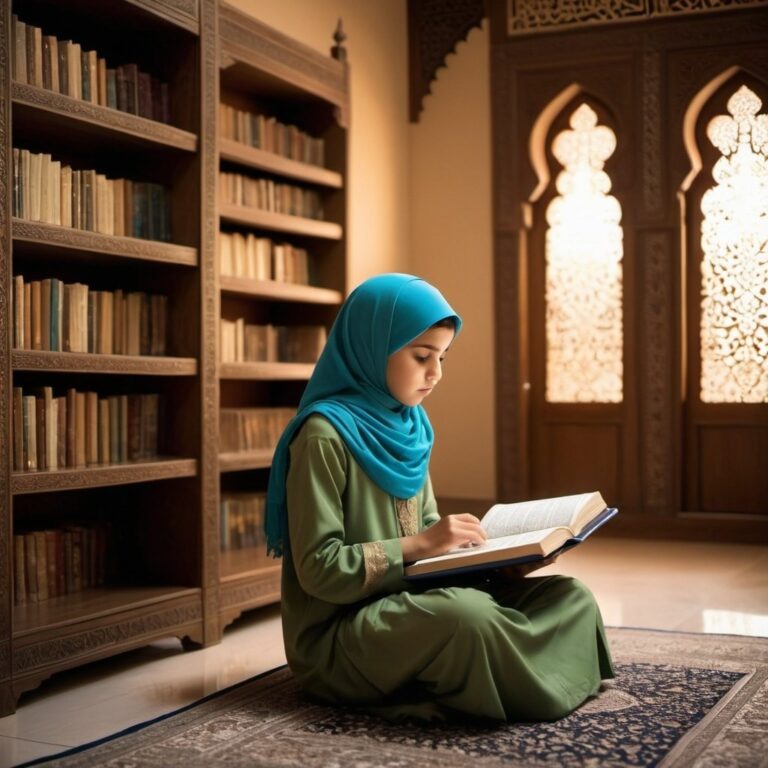Embarking on DhulHijjah: Understanding the Tradition of Cutting Hair and Nails
As Muslims around the arena prepare to go into the sacred month of DhulHijjah, a duration wealthy with significance and religious opportunity, one historic lifestyle frequently comes into cognizance: the prohibition of slicing hair and nails.
This exercise, deeply rooted in Islamic teachings, holds special importance for each pilgrims and the wider Muslim community. In this blog submit, we delve into the motives at the back of this subculture, its timings, and its non secular significance. We’ll also provide sensible guidelines for looking at it with reverence, deal with commonplace misconceptions, and answer often asked questions.
Introduction to DhulHijjah and Its Significance in Islam
DhulHijjah, the twelfth and very last month of the Islamic lunar calendar, is a length imbued with profound spiritual importance. It is during this month that the yearly pilgrimage to Mecca, referred to as Hajj, takes location. For Muslims, DhulHijjah represents a time of heightened spirituality, devotion, and community bonding.
The Sacred Month
DhulHijjah is one of the four sacred months in Islam, as noted in the Qur’an. During those months, acts of worship convey more weight, and believers are recommended to increase their exact deeds and keep away from sinful conduct. The first ten days of DhulHijjah are specifically respected, as they’re considered a number of the first-class days for acts of devotion.
Pilgrimage and Sacrifice
The most amazing occasion for the duration of DhulHijjah is the Hajj pilgrimage, that is one of the Five Pillars of Islam. Every in a position-bodied Muslim who can have the funds for it’s miles required to perform Hajj at least as soon as in their lifetime. The end result of Hajj is marked through the pageant of Eid al-Adha, a time of sacrifice and celebration, commemorating the willingness of Prophet Ibrahim (Abraham) to sacrifice his son in obedience to Allah.
The Prohibition of Cutting Hair and Nails: Understanding the Tradition
The prohibition against slicing hair and nails in the course of DhulHijjah is a subculture that many Muslims take a look at, mainly people who intend to provide a sacrificial animal on Eid al-Adha. This phase explores the origins and importance of this practice.
Origins in Hadith
The lifestyle is based on sayings (hadith) of the Prophet Muhammad (peace be upon him). According to a hadith narrated with the aid of Umm Salamah, the Prophet cautioned that anyone proceeding to provide a sacrifice have to chorus from slicing their hair and nails from the beginning of DhulHijjah till the sacrifice is made. This practice symbolizes a country of humility and devotion, comparable to the pilgrim’s country of Ihram at some point of Hajj.
Symbolic Significance
Refraining from reducing hair and nails is seen as a manner of emulating the pilgrims who’re in a country of Ihram, a sacred kingdom of purity and devotion. It signifies a dedication to spiritual readiness and a willingness to post to Allah’s commands. The act of no longer altering one’s physical appearance also reflects a focus on inner purification and religious boom.
Common Practices
While the prohibition isn’t always compulsory, it’s far a encouraged and respected exercise among many Muslims. Those who look at it achieve this out of affection and reverence for the prophetic subculture. The practice is commonly observed from the sighting of the new moon of DhulHijjah until the final touch of the sacrificial act on Eid al-Adha.
When Does the Prohibition Start and End?
Understanding the specific timings for this tradition is crucial for people who want to examine it efficaciously. This section provides clarity on when the prohibition starts offevolved and ends, ensuring that readers can observe the practice with self assurance.
Starting Point
The prohibition on reducing hair and nails begins with the sighting of the brand new moon of DhulHijjah. This marks the professional begin of the month and the beginning of the 10-day length main as much as Eid al-Adha. It is crucial to be aware that the sighting of the moon may also range slightly depending on geographical vicinity and neighborhood Islamic authorities.
Duration of the Prohibition
The prohibition keeps until the act of sacrifice is finished on the tenth day of DhulHijjah, which is Eid al-Adha. For the ones not appearing the pilgrimage, this indicates refraining from reducing hair and nails for the first ten days of DhulHijjah. Pilgrims in a nation of Ihram observe additional tips precise to their pilgrimage rituals.
Exceptions and Flexibility
While the tradition is widely respected, there’s flexibility in its observance. In instances of necessity or hardship, which include scientific motives, exceptions can be made. The purpose in the back of the exercise is extra full-size than strict adherence, and Allah’s mercy encompasses all situations.
The Spiritual and Cultural Importance of Observing This Tradition
Observing the culture of no longer cutting hair and nails throughout DhulHijjah is greater than a ritual; it incorporates deep spiritual and cultural importance. This phase delves into the reasons why this exercise is cherished and its effect on the Muslim network.
Spiritual Readiness
Refraining from slicing hair and nails symbolizes a state of non secular readiness and humility. It is a reminder for Muslims to focus on their inner selves, searching for purification and closeness to Allah. This length of self-restraint encourages reflection, repentance, and the strengthening of one’s religion.
Connection to Pilgrims
By gazing this tradition, Muslims who aren’t performing Hajj sense a feel of connection to folks who are on the pilgrimage. It fosters a sense of solidarity and cohesion in the international Muslim community. The shared revel in of staring at similar practices creates a bond that transcends geographical barriers.
Cultural Continuity
The culture of no longer slicing hair and nails during DhulHijjah has been exceeded down thru generations. It is a manner of maintaining and honoring the cultural background of Islam. By taking part in this exercise, Muslims preserve a link to their ancestors and the wealthy history in their religion.
How This Tradition Relates to the Hajj Pilgrimage
The connection between the prohibition of cutting hair and nails and the Hajj pilgrimage is profound. This phase explores how this subculture mirrors the state of Ihram and its significance for both pilgrims and non-pilgrims.
The State of Ihram
During Hajj, pilgrims enter a sacred nation referred to as Ihram, characterised by using particular clothing and behavioral regulations. One of the important thing elements of Ihram is the prohibition on slicing hair and nails, symbolizing purity, humility, and a focus on non secular subjects. For non-pilgrims, staring at a similar practice in the course of DhulHijjah is a way to emulate the pilgrims’ devotion.
Spiritual Parallels
The act of refraining from reducing hair and nails creates a non secular parallel between the ones acting Hajj and those observing the subculture from afar. It serves as a reminder of the generic standards of submission to Allah and the pursuit of piety. This shared practice highlights the solidarity of the Muslim Ummah (community) in their devotion to Allah.
Enhancing the Eid al-Adha Experience
For those no longer performing Hajj, gazing the culture enhances the enjoy of Eid al-Adha. It provides a layer of spiritual coaching leading as much as the competition, making the act of sacrifice extra significant. By following the prophetic steering, Muslims feel a deeper connection to the essence of Eid al-Adha and the story of Prophet Ibrahim.
Common Misconceptions and Clarifications
Despite its sizeable observance, the subculture of now not slicing hair and nails in the course of DhulHijjah is now and again misunderstood. This phase addresses common misconceptions and offers clarifications to ensure correct know-how.
Misconception 1: It’s Obligatory
One commonplace misconception is that the prohibition is obligatory for all Muslims. In fact, it is a encouraged exercise (Sunnah) and no longer a obligatory requirement. Observing it is a manner to earn extra praise and follow the Prophet’s example, but it is not sinful to omit it.
Misconception 2: Applies Only to Pilgrims
Another misconception is that the prohibition applies handiest to those acting Hajj. While pilgrims do adhere to a strict version of this exercise as a part of their Ihram, the advice to refrain from slicing hair and nails extends to all Muslims proceeding to offer a sacrifice on Eid al-Adha, no matter whether they’re on pilgrimage.
Misconception 3: Includes All Grooming Activities
Some agree with that the prohibition includes all sorts of grooming and private care. However, the restriction mainly relates to reducing hair and nails. Other grooming activities, consisting of bathing and trendy hygiene, aren’t confined and have to be maintained.
Practical Tips for Observing This Tradition with Reverence
For individuals who desire to observe the subculture of now not slicing hair and nails during DhulHijjah, sensible steerage can assist make certain it is achieved with reverence and ease. This segment offers recommendations to make the observance significant and achievable.
Plan in Advance
To avoid any inconvenience, plan your grooming time table in advance of DhulHijjah. Ensure that haircuts, nail cutting, and other related activities are completed before the month starts offevolved. This preparation will assist you examine the lifestyle easily with none disruptions.
Focus on Spiritual Preparation
Use the length of DhulHijjah to attention on non secular coaching. Engage in acts of worship, together with multiplied prayer, recitation of the Qur’an, and charitable deeds. Reflect on the significance of the way of life and its connection to humility and submission to Allah.
Seek Support from Community
Observing this lifestyle can be extra significant whilst completed together. Seek guide from own family participants, pals, or nearby community companies who also are staring at the practice. Sharing stories and encouragement can beautify your determination and create a feel of camaraderie.
The Significance of the 10th Day of DhulHijjah (Eid al-Adha)
The tenth day of DhulHijjah, called Eid al-Adha, is a day of mammoth importance in Islam. This phase explores the importance of this present day and its connection to the culture of not slicing hair and nails.
Commemoration of Sacrifice
Eid al-Adha commemorates the willingness of Prophet Ibrahim (Abraham) to sacrifice his son in obedience to Allah’s command. It is a day of sacrifice, gratitude, and party. The subculture of now not cutting hair and nails culminates with the act of sacrifice on this day, symbolizing the quit of the duration of training and devotion.
Acts of Worship on Eid al-Adha
Muslims round the arena engage in numerous acts of worship on Eid al-Adha, which include the supplying of a sacrificial animal. The meat from the sacrifice is shipped amongst own family, pals, and people in want, fostering a experience of community and charity. Refraining from reducing hair and nails all through DhulHijjah adds a layer of non secular guidance main up to this tremendous act.
Celebration and Reflection
Eid al-Adha is a time of birthday celebration and mirrored image. Muslims acquire for communal prayers, percentage festive meals, and spend time with loved ones. It is also an opportunity to mirror at the classes of sacrifice, obedience, and believe in Allah. Observing the way of life of now not slicing hair and nails enhances the spiritual depth of this birthday party.
Frequently Asked Questions (FAQs) with Detailed Answers
To offer comprehensive steering at the culture of now not reducing hair and nails at some point of DhulHijjah, we address twenty regularly asked questions. These certain solutions intention to clarify any doubts and offer practical recommendation for looking at this subculture.
1. Is it mandatory to refrain from reducing hair and nails all through DhulHijjah?
No, it isn’t always obligatory. It is a recommended Sunnah exercise for those intending to offer a sacrifice on Eid al-Adha.
2. Does the prohibition observe to each males and females?
Yes, the recommendation applies to each women and men who are making plans to offer a sacrifice.
3. Can I trim my nails or reduce my hair if I face a clinical necessity?
Yes, exceptions can be made in instances of medical necessity or worry. The aim in the back of the exercise is more crucial.
4. Does the prohibition encompass other styles of grooming, like shaving or waxing?
The prohibition specifically pertains to cutting hair and nails. Other grooming sports are not restricted.
5. What need to I do if I accidentally cut my hair or nails in the course of DhulHijjah?
If carried out unintentionally, it is not considered sinful. Continue staring at the practice with the intention of in search of Allah’s satisfaction.
6. Can youngsters look at this way of life?
While the practice is in the main for adults, parents can encourage their children to participate to train them about the way of life.
7. Is it permissible to reduce hair and nails before the begin of DhulHijjah?
Yes, you may reduce hair and nails earlier than the sighting of the brand new moon marking the start of DhulHijjah.
8. How does this culture relate to the country of Ihram for pilgrims?
Pilgrims in Ihram observe a stricter version of this exercise, reflecting their country of purity and devotion in the course of Hajj.
9. Can I dye my hair or follow nail polish at some point of DhulHijjah?
Yes, dyeing hair or applying nail polish is permissible as lengthy because it does no longer contain slicing hair or nails.
10. Do I want to renew my intention no longer to cut hair and nails every day for the duration of DhulHijjah?
No, a single goal at the beginning of DhulHijjah suffices for the whole period.
11. Are there particular supplications or prayers to recite while gazing this way of life?
While there aren’t any particular supplications, undertaking trendy acts of worship and prayer is encouraged.
12. How does this subculture decorate the experience of Eid al-Adha?
It adds a layer of non secular preparation, making the act of sacrifice on Eid al-Adha extra significant.
13. Can I trim facial hair throughout DhulHijjah?
The prohibition consists of cutting all hair, which includes facial hair. However, other grooming activities are allowed.
14. Is it permissible to reduce hair and nails after supplying the sacrifice?
Yes, once the sacrifice is finished on Eid al-Adha, you could cut your hair and nails.
15. How can I provide an explanation for this lifestyle to non-Muslim pals or colleagues?
Explain that it is a symbolic act of humility and devotion, reflecting a commitment to spiritual readiness.
16. Can I perform this exercise if I am not presenting a sacrifice?
While the exercise is in particular endorsed for the ones offering a sacrifice, others also can have a look at it as an act of devotion.
17. Are there any non secular benefits related to this exercise?
Following the Sunnah of Prophet Muhammad (peace be upon him) brings severa blessings and strengthens our religion and reference to Allah.
18. Does this exercise have a selected timeline at some stage in DhulHijjah?
Yes, it’s miles recommended to start observing the tradition from the first day of DhulHijjah and keep until the sacrifice is obtainable.
19. Can I trim my hair or nails after Eid al-Adha?
Yes, you could resume your regular grooming activities after Eid al-Adha.
20. Is it encouraged to speedy at the day of Arafah even as watching this culture?
Fasting on the day of Arafah is a recommended act, and it is endorsed to combine it with the exercise of now not cutting hair and nails at some stage in DhulHijjah. Overall, gazing the way of life of now not cutting hair and nails all through DhulHijjah adds a deeper spiritual size to this sacred month and complements our experience of Eid al-Adha.










